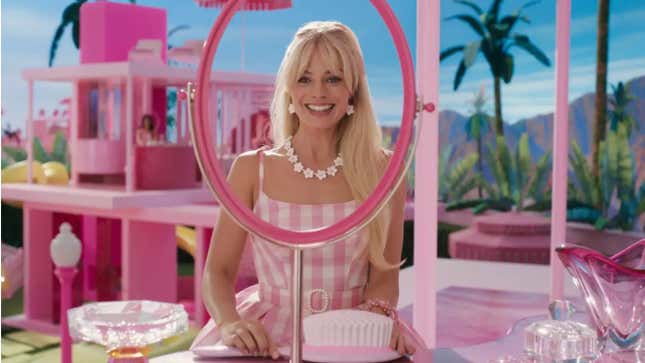So, Barbie Seems to Have Been an Outlier
A new study found that the pledges made by major studios to hire more women and people of color to direct more movies were largely "performative."


In 2023, Greta Gerwig’s Barbie was the highest-grossing movie of the year. But a new study published by USC Annenberg’s Inclusion Initiative this week suggests the plucky feminist hit was an outlier: Every major studio continued to hire mostly male directors for the top-grossing films of the year, continuing a years-long trend that’s kept women and people of color on the sidelines. This comes despite numerous studios’ pledges to hire a more diverse slate of directors since the rise of MeToo and amid a national reckoning for racial justice after police murdered George Floyd in 2020.
Per the Inclusion Initiative, of the 116 directors attached to the highest-grossing domestic films of 2023, only 14 (12%) were women, slightly up from 9% in 2022. (In 2018, just 4.5% of directors were women.) Sure, these more recent numbers are… an improvement, but it’s impossible to celebrate when such a gaping disparity remains. Broken down over the last 17 years, Universal Pictures led the way in employing female directors for major box office releases among big studios with a hiring rate of 9%, while Paramount Pictures came in last with a hiring rate of 1.6%. To be clear: Both of those numbers are very bad!
Notably, of the 14 women directors attached to major releases in 2023, just four were women of color, including Celine Song, the director of Past Lives, and Nia DaCosta, who directed The Marvels. DaCosta faced significant vitriol as the Black woman director of a major superhero movie centering on female superheroes, and her experience is a reminder that being hired in the first place is just the beginning of what women, and especially women of color, directors are up against.
As for racial diversity, the study found just 22.4% of directors of the highest-grossing movies of 2023 came from marginalized racial and ethnic backgrounds, essentially unchanged from around 21% in 2022.
The study’s authors provided an understandably bleak reflection on these numbers: “This report offers a contrast to those who might celebrate the dawning of change in Hollywood after a year in which ‘Barbie’ topped the box office. One film or one director are simply not enough to create the sea change that is still needed behind the camera,” they wrote. “Until studios, executives and producers alter the way they make decisions about who is qualified and available to work as a director on top-grossing films, there is little reason to believe that optimism is warranted.”
The USC Annenberg study comes just one day after a different study from the Center for the Study of Women in Television and Film at San Diego State University offered similar findings: Just 16% of directors on the 250 highest-grossing films of 2023 were women, which is down from 18% in 2022. “It’s the ultimate illusion, Greta Gerwig’s well-deserved triumph belies the inequality that pervades the mainstream film industry,” Dr. Martha Lauzen, the report’s author, said in a statement about her findings. “The numbers tell the story. Behind-the-scenes gender ratios in Hollywood remain dramatically skewed in favor of men.”
A popular refrain about 2023 is that women in the entertainment industry, from Beyoncé and Taylor Swift to Greta Gerwig, saved the economy. There’s obviously a demand for art created by women that centers unrepentantly feminine perspectives—so it’s more puzzling than ever that studios continue to shoot themselves in the foot by ignoring this.